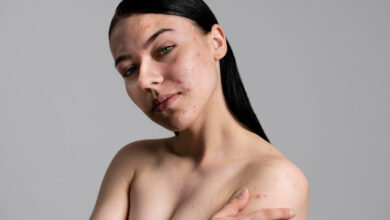Why Visit a Vein Clinic? What to Expect at Your First Appointment

Are you experiencing discomfort from varicose veins, spider veins, or other vein-related issues? Visiting a vein clinic can be a crucial step towards effective treatment and relief. Understanding what to expect at a vein clinic can help alleviate any apprehensions and prepare you for your journey towards better vascular health. This guide will walk you through the typical process, from the initial consultation to the various treatment options available.
The Importance of Seeking Professional Help
Vein problems are more than just a cosmetic issue; they can signify underlying health concerns. Conditions like varicose veins, spider veins, and chronic venous insufficiency can cause pain, swelling, and other complications if left untreated. A vein clinic specializes in diagnosing and treating these issues, ensuring that you receive the most effective care.
Initial Consultation: What to Expect
Your first visit to a vein clinic typically involves a comprehensive evaluation by a vein specialist. This initial consultation is crucial for diagnosing your condition and planning your treatment.
Medical History and Symptoms Review
The process begins with a thorough review of your medical history. Be prepared to discuss your symptoms, including any pain, swelling, or changes in the appearance of your veins. The specialist will ask about your overall health, any existing medical conditions, and family history of vein problems.
Physical Examination
Next, the specialist will conduct a physical examination of your legs and affected areas. This examination helps in assessing the severity of your condition and identifying any visible signs of venous disease.
Diagnostic Tests
To gain a deeper understanding of your vein health, the specialist may recommend diagnostic tests. The most common test is a duplex ultrasound, which provides detailed images of your veins and measures blood flow. This non-invasive test helps in identifying the location and extent of vein problems, allowing for accurate diagnosis and treatment planning.
Personalized Treatment Plan
After the evaluation and diagnostic tests, the specialist will discuss the findings with you and develop a personalized treatment plan. This plan will be tailored to address your specific condition and health needs.
Discussion of Treatment Options
There are several treatment options available for vein conditions, ranging from conservative measures to minimally invasive procedures. Your specialist will explain each option, its benefits, and potential risks. Common treatments include:
- Compression Therapy: Wearing compression stockings to improve blood flow and reduce symptoms.
- Sclerotherapy: Injection of a solution into the affected veins, causing them to collapse and eventually fade.
- Endovenous Laser Treatment (EVLT): Using laser energy to close off problematic veins.
- Radiofrequency Ablation (RFA): Utilizing radiofrequency energy to treat varicose veins.
- Microphlebectomy: Removal of larger varicose veins through small incisions.
Setting Treatment Goals
It’s essential to set realistic treatment goals with your specialist. Discuss what you hope to achieve, whether it’s symptom relief, improved appearance, or preventing further complications. Your specialist will help you understand what outcomes to expect and the timeline for achieving them.
Preparing for Treatment
Once you have agreed on a treatment plan, your specialist will provide detailed instructions on how to prepare. This may include guidelines on medications, fasting, or wearing specific clothing.
Pre-Treatment Instructions
- Medications: You may need to stop taking certain medications, such as blood thinners, before your procedure.
- Fasting: For some treatments, you might be asked to fast for a few hours beforehand.
- Clothing: Wear loose, comfortable clothing and avoid applying lotions or creams to your legs.
The Treatment Procedure
Understanding the treatment procedure can help ease any concerns you may have. Most vein treatments are minimally invasive and performed on an outpatient basis, meaning you can go home the same day.
On the Day of Treatment
- Check-In: Upon arrival, you will check in and complete any necessary paperwork.
- Preparation: You will be prepped for the procedure, which may involve cleaning and marking the treatment area.
- Anesthesia: Local anesthesia is commonly used to numb the treatment area, ensuring your comfort during the procedure.
The Procedure Itself
The specific steps of the procedure will vary depending on the treatment you are receiving. For instance, during sclerotherapy, the specialist will inject a solution into your veins using a fine needle. In EVLT or RFA, a catheter is inserted into the vein, and laser or radiofrequency energy is applied to close it off.
Post-Treatment Care
After the procedure, you will receive instructions for post-treatment care. This may include:
- Compression Stockings: You may need to wear compression stockings for a specified period to support healing.
- Activity Restrictions: While most patients can resume normal activities quickly, you might be advised to avoid strenuous exercise or prolonged standing for a few days.
- Follow-Up Appointments: Regular follow-up appointments are crucial to monitor your progress and address any concerns.
Recovery and Results
Recovery times vary depending on the treatment and individual factors. Most patients experience minimal downtime and can return to their daily activities within a day or two.
Monitoring Your Recovery
Pay attention to your body’s signals during the recovery period. It’s normal to experience mild bruising, swelling, or discomfort, but these symptoms should gradually improve. Contact your specialist if you experience severe pain, excessive swelling, or signs of infection.
Achieving Optimal Results
To achieve the best results, follow all post-treatment instructions carefully. Attend all scheduled follow-up appointments to ensure your veins are healing properly. Your specialist may recommend lifestyle changes, such as maintaining a healthy weight, exercising regularly, and avoiding prolonged periods of sitting or standing.
Addressing Concerns and Questions
It’s natural to have questions or concerns about your treatment. Don’t hesitate to reach out to your vein specialist for clarification or advice. They are there to support you throughout the process and ensure you feel comfortable and informed.
Common Questions
- Is the procedure painful? Most vein treatments involve minimal discomfort due to the use of local anesthesia.
- How long does the procedure take? Most procedures are completed within an hour.
- Will my insurance cover the treatment? Many vein treatments are covered by insurance, especially if they are medically necessary. Check with your provider and clinic for specific coverage details.
Long-Term Vein Health
Maintaining healthy veins requires ongoing care and attention. After treatment, your vein specialist will provide guidance on how to prevent future vein problems.
Preventative Measures
- Regular Exercise: Engage in activities that promote good circulation, such as walking, swimming, or cycling.
- Healthy Diet: Maintain a balanced diet to support vascular health and prevent weight gain.
- Compression Stockings: If recommended by your specialist, continue wearing compression stockings to improve blood flow.
Recognizing Signs of Recurrence
While vein treatments are highly effective, there’s always a possibility of recurrence. Stay vigilant for any signs of new vein problems, such as pain, swelling, or visible veins. Early intervention can prevent complications and maintain your vascular health.
Conclusion: Taking the First Step Towards Healthier Veins
Understanding what to expect at a vein clinic can empower you to take control of your vein health. From the initial consultation to post-treatment care, each step is designed to provide you with effective relief and improve your quality of life. Don’t let vein problems hold you back—schedule a consultation at a vein clinic today and take the first step towards healthier, happier legs.



